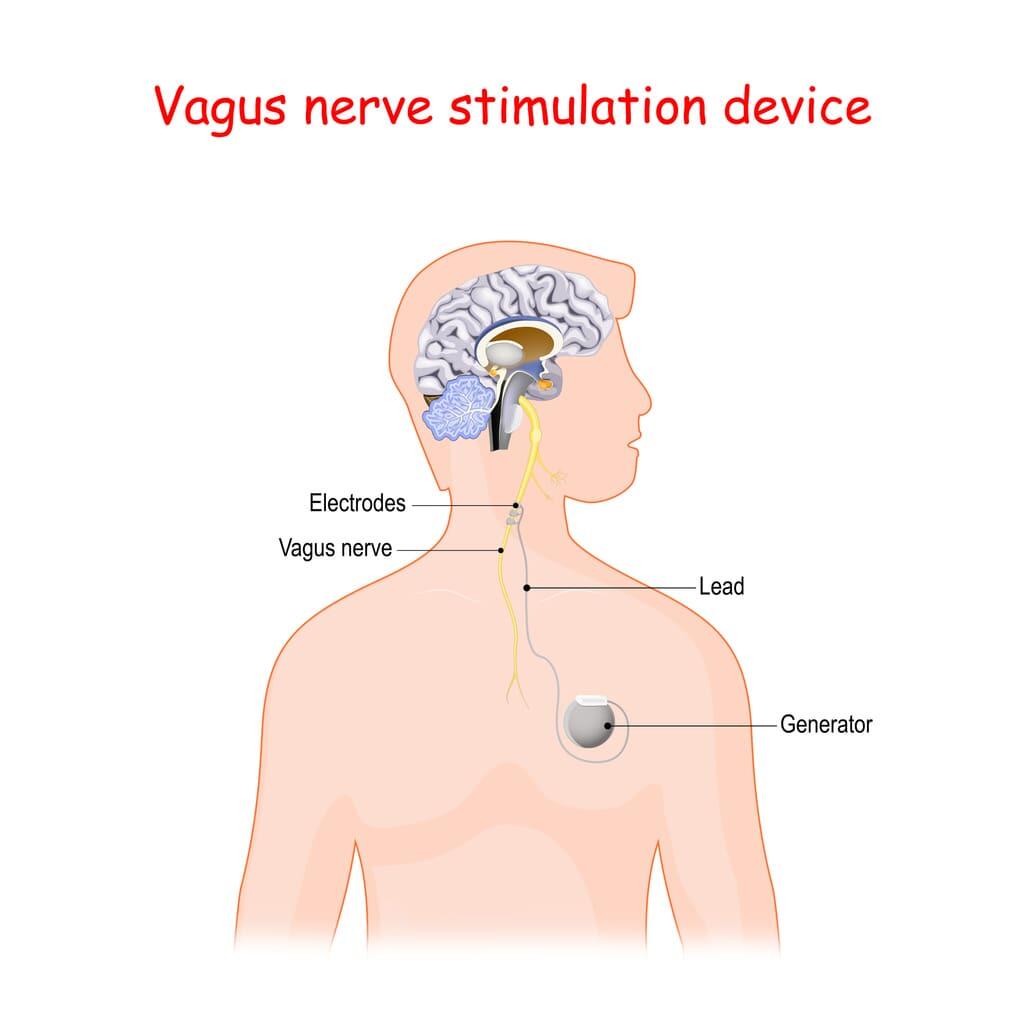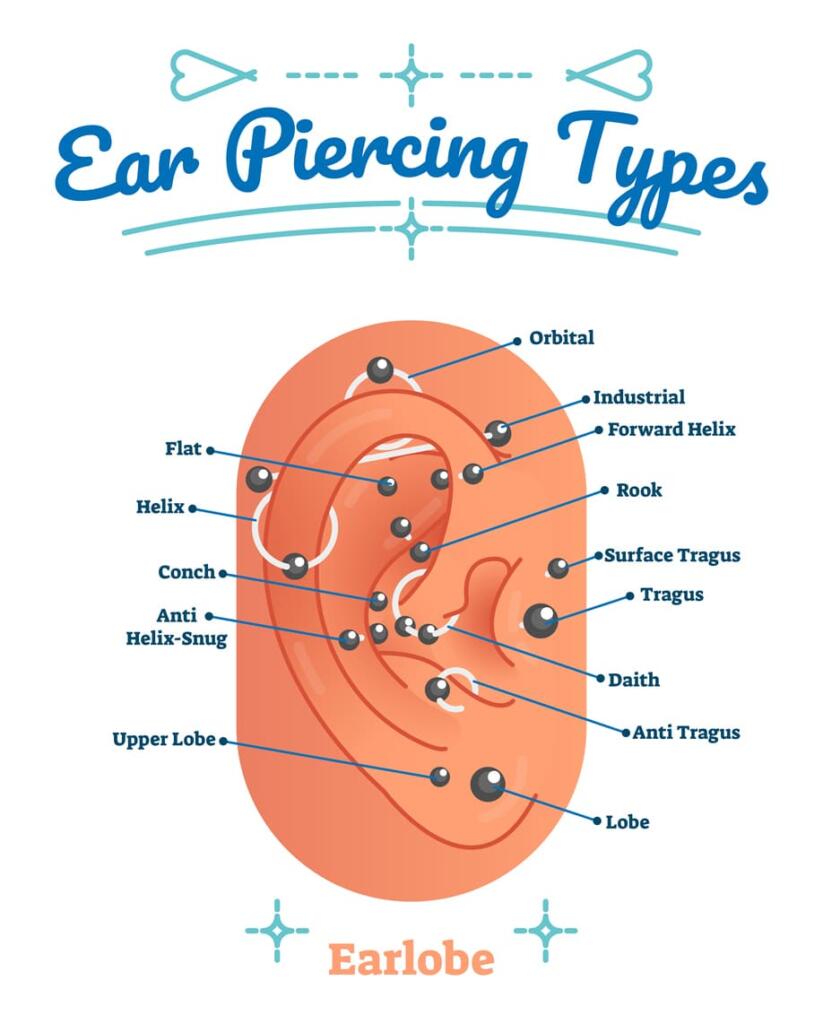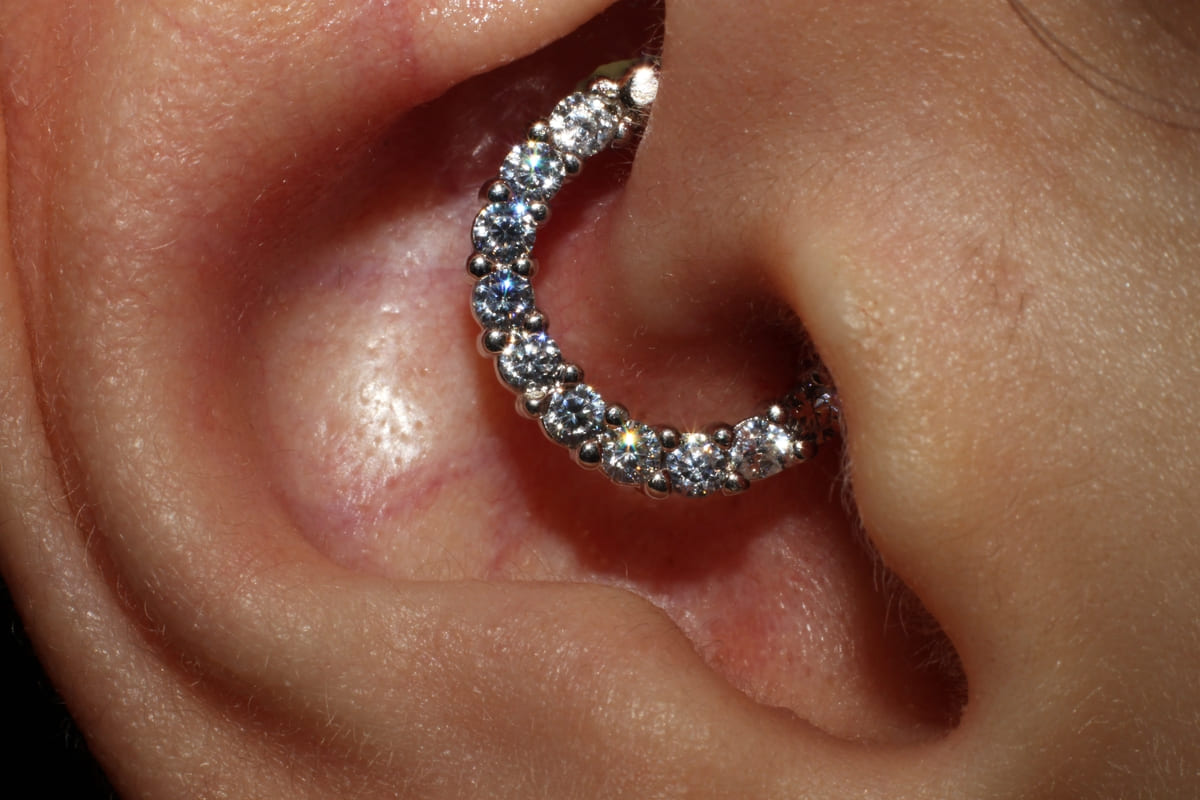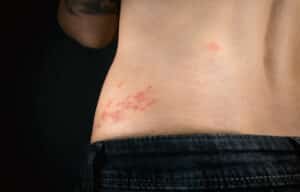Migraines are intensely painful headaches that are often accompanied by mood swings, nausea, and an exaggerated sensitivity to light, sounds and smells. The symptoms related to migraine can last anywhere from a few hours to a few days, and pain medications are frequently ineffective, especially as the headache progresses. According to the Office on Women’s Health, 29.5 million Americans experience migraines. Approximately three-quarters of migraine sufferers are women.
Both medical professionals and migraine sufferers seek alternatives to traditional pain medications. Unfortunately, migraines can vary from person to person, and what relieves one person’s migraine often triggers another’s. One of the novel alternatives that is being explored is a specialized form of ear piercing known as Daith piercing.
A Daith piercing is a piercing in the small fold of cartilage known as the helix, positioned just over the ear canal. Proponents of Daith piercing claim that piercing the ear through that precise spot can help permanently alleviate the intense pain of migraines.
This article explores why Daith piercing is believed to suppress migraines, how much truth there is to those claims, and whether or not it’s a good idea for you.
Migraines

Headaches are not the only symptom of a migraine. Along with the intense pain, migraines can induce mood swings, digestive upset, and sensitivity to lights, sounds, and smells. In some cases, people also experience sensory disturbances such as flashing lights, blind spots, and zig-zagging lines. The other symptoms of a migraine can start hours to days before the headache hits and may continue well after the pain is managed.
The exact cause of migraines is still unknown, but they are believed to be caused by abnormal brain activity leading to overactive nerve cells. Factors that have been identified as making someone more susceptible to migraines include:
Age
Migraines can happen at any time, but the majority of cases begin in adolescence. Many women experience some relief from their migraines once they undergo menopause, though some may see an increase in symptoms.
Family history
Those who experience migraines are more likely to have family members who also experience migraines.
Female sex or gender
Females are three times more likely to develop migraine than males. Recent studies indicate that trans women who are undergoing estrogen therapy may also be more likely to experience migraines, while trans men may have a reduced risk of migraine compared to cis-gendered women.
Mood disorders
Individuals with mood disorders, such as depression, anxiety, or bipolar disorder, are more likely to report experiencing migraines.
Seizure disorders
According to the Epilepsy Foundation, individuals with a seizure disorder are twice as likely to develop migraine headaches.
Vagus Nerve

The vagus nerve, or vagal nerves, are the main component of the parasympathetic nervous system. Acupuncture and acupressure practitioners stimulate the vagus nerve to reduce bodily inflammation, heart rate, and blood pressure. Stimulating the vagus nerve with electrical impulses is an FDA-approved method for treating both epilepsy and depression. Research has indicated that acupuncture, which stimulates the vagus nerve through the ear, may also be effective at relieving the symptoms of migraine.
The Piercing

The flap of cartilage that is punctured for a Daith piercing is awkwardly placed. The procedure uses a curved needle and is typically done by hand rather than using an air gun. This means that it is likely to take longer than getting your earlobes pierced, and it may be slightly more painful.
The cartilage pierced, or Daith piercing, is also thicker than the cartilage at the earlobe, extending the healing time. While piercings through the earlobe typically heal in just a month or two, Daith piercings may take six to nine months to fully heal.
It is always important to take care of your piercing to avoid infection. This is particularly true of Daith piercings, as they carry a higher risk of infection than other piercings. If done incorrectly, they also have a higher risk of causing nerve damage or triggering allergies.
But Does it Work?
Most of the scientific evidence has indicated that this method does not appreciably decrease pain. The prevailing theory is that the majority of people who do get relief are experiencing a placebo effect. However, there are a few scattered cases of individuals finding relief through Daith piercing.
This is not an approved treatment for migraine, and it is not covered by health insurance.
In Short
The idea that Daith piercings can reduce migraines is based on the theory that interrupting or stimulating the vagus nerve by piecing it will cause a permanent reduction in migraine symptoms. Although there is anecdotal evidence that this novel treatment may help a small sample of migraine sufferers, it doesn’t appear to help most. Acupuncture or acupressure applied in the same spot may actually help to decrease the intensity and duration of your migraines, however.
If you decide to get a Daith piercing, whether to reduce migraines or for aesthetic preference, make sure that it stays clean. Choose a reputable piercing parlor, be meticulous about aftercare, and contact a medical professional immediately if it gets infected.
Read Next:
How to Treat Migraines: My 35-Year Journey







